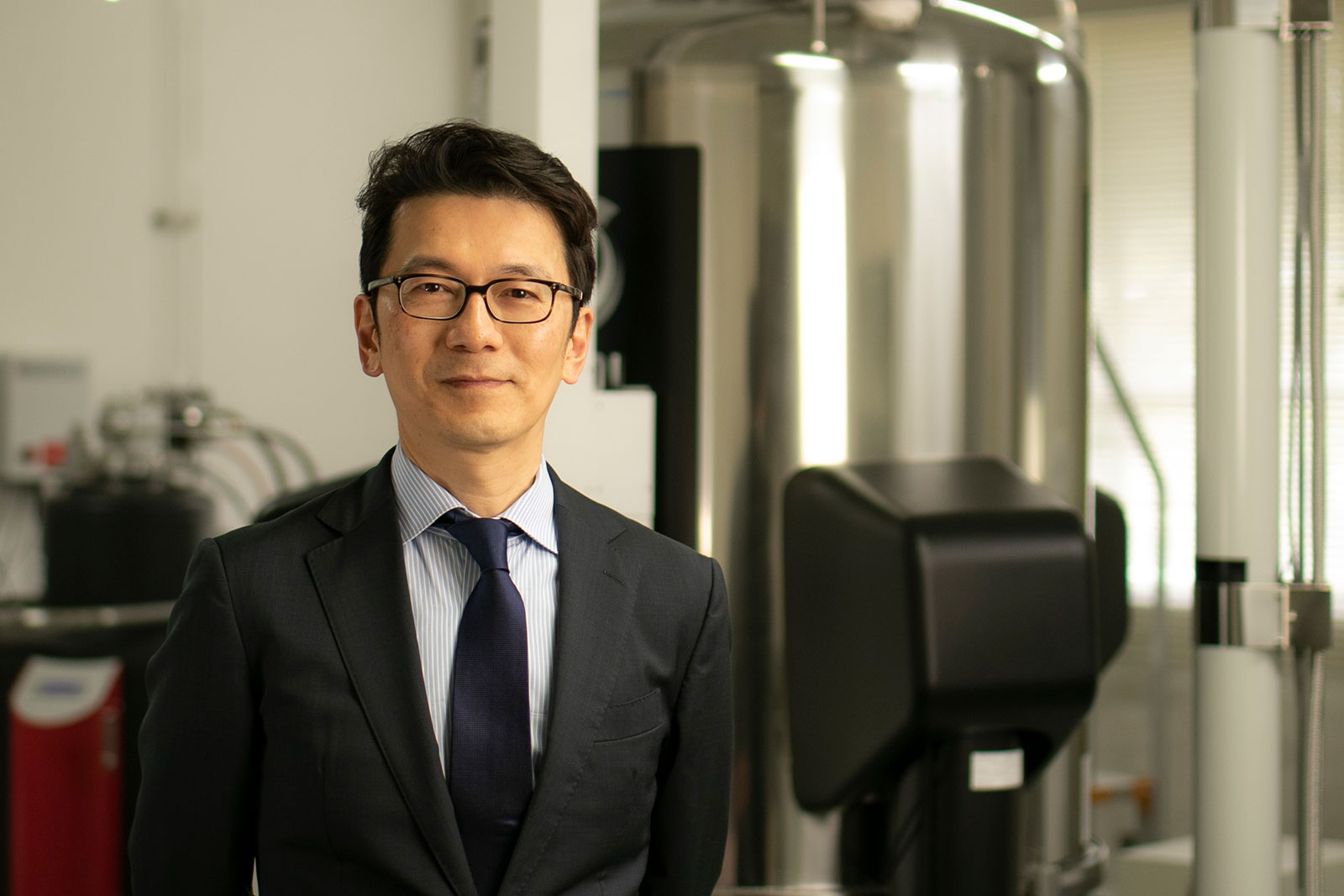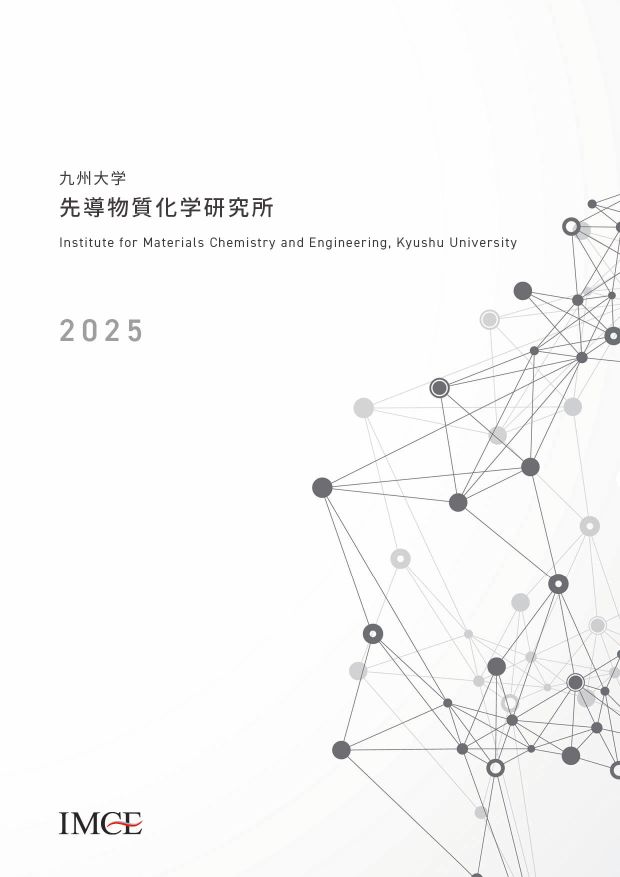
Director
Institute for Materials Chemistry and Engineering
Kyushu University
Since its inception 20 years ago, the Institute for Materials Chemistry and Engineering (IMCE) at Kyushu University has been committed to producing world-class research results in the interdisciplinary field of materials chemistry. While continually strengthening our fundamental research capabilities, we consistently aim to fulfill our crucial mission: to respond to the diverse and evolving needs of society with state-of-the-art scientific and technological prowess.
As outlined in our 4th Mid-term Plan, which began in 2022, the overall objective of the institute is to contribute to the development of interdisciplinary fields in materials science and chemistry, and to establish research bases that lead internationally. Specifically, our missions include:
1. Conducting research that ranges from the fundamental to the applied, all the way to societal implementation, while bolstering and fostering collaborations with both domestic and international research institutions.
2. Contributing to the achievement of a decarbonized society through innovations in materials chemistry and by extending our research capabilities into fields such as energy, environment, and life sciences.
3. Promoting advanced, interdisciplinary collaborative research in the field of materials and devices as a cooperative research base.
The Institute comprises four research departments: the Division of Fundamental Organic Chemistry, Division of Applied Molecular Chemistry, Division of Integrated Materials, and Division of Advanced Device Materials. These departments focus on various aspects of materials chemistry, including molecules, molecular and atomic assemblies, nanomaterials, and advanced device materials. Since 2015, we have strategically advanced international collaborative research and bolstered our international capacities by establishing the Division of Soft Materials.
Our institute is an active participant in the MEXT's 'Network Joint Research Center for Materials and Devices'. We maintain close collaborations with institutions such as RIES at Hokkaido University, IMRAM at Tohoku University, CLS at Tokyo Institute of Technology, and SANKEN at Osaka University. This collaboration has allowed us to establish a comprehensive network across Japan, annually conducting over 400 joint research projects. Researchers from universities and research institutions nationwide are encouraged to participate in joint research initiatives at our bases.
In order to ensure the continued scientific and technological prowess, industrial strength, and international competitiveness of Japan, it is crucial to nurture the next generation of young researchers who will advance fundamental research. We cooperate closely with several faculties, including the Graduate School of Engineering, Graduate School of Science, the Interdisciplinary Graduate School of Engineering Sciences, and Graduate School of Integrated Frontier Sciences. Together, we provide interdisciplinary research guidance in graduate education, leveraging the unique characteristics of the institute. Our goal is to foster the development of human resources, enabling young researchers to fully exhibit their abilities based on their own innovative ideas. Our attractive research organization and cutting-edge research environment are ready and eager to welcome many undergraduates, graduate students, and young researchers to the Institute for Materials Chemistry and Engineering.
先導物質化学研究所
The Institute for Materials Chemistry and Engineering (IMCE) consists of five divisions that promote cutting-edge research in materials science. Our mission is to develop innovative materials and technologies based on nanoscience and nanotechnology. We investigate the structure and functions of materials from atomic and molecular scales to macroscale applications, fostering interdisciplinary collaboration across multiple research fields.
Establishing fundamental chemistry of atomic assemblies, molecular assemblies, and supramolecular structures
Synthesis and evaluation of soft materials and composites with higher-order nanostructures
Creation of fusion materials utilizing molecular nanotechnology
Creation and functional analysis of new functional materials with fine structures
Creating pioneering fields in materials chemistry with applications in IT, life sciences, environment, and energy
IMCE is distributed across two campuses, each affiliated with different graduate schools:
Interdisciplinary Graduate School of Engineering Sciences
Graduate School of Engineering, Graduate School of Sciences
Faculty members across all campuses actively recruit and supervise graduate students pursuing master's and doctoral degrees through their respective graduate schools. This multi-disciplinary approach provides students with diverse perspectives and research opportunities in materials chemistry and engineering.
The Institute for Materials Chemistry and Engineering traces its roots back to 1944, evolving through several reorganizations to become a leading research institute in materials science and engineering at Kyushu University.
Research Institute for Wood founded at Kyushu Imperial University with 3 divisions
Reorganized as Research Institute for Production Science with 5 divisions
Reorganized as Institute of Advanced Material Study with 3 research divisions and 13 research fields
Institute for Fundamental Research of Organic Chemistry established with 3 research divisions
Institute for Materials Chemistry and Engineering (IMCE) established through merger of the Institute of Advanced Material Study and the Institute for Fundamental Research of Organic Chemistry
Certified as a Network-type Joint Research Base for Materials and Devices
Soft Materials Division created

Discover comprehensive information about our research activities, facilities, and achievements in our official brochure. The brochure provides detailed insights into our four research divisions, cutting-edge facilities, and international collaborations.
Note: The brochure is regularly updated to reflect our latest research developments and achievements. Last updated: 2025.